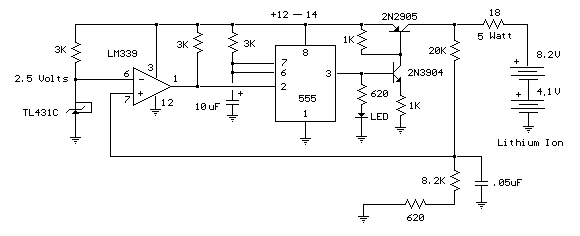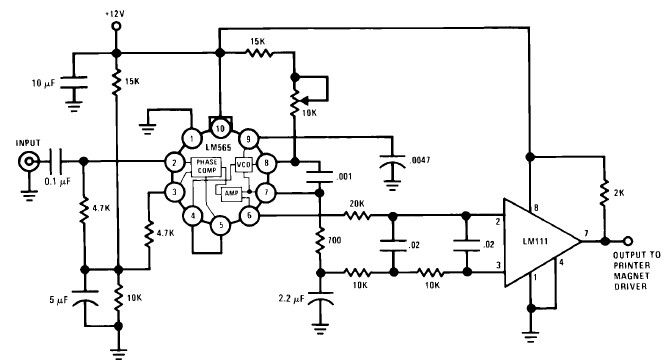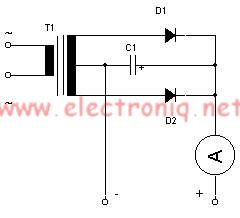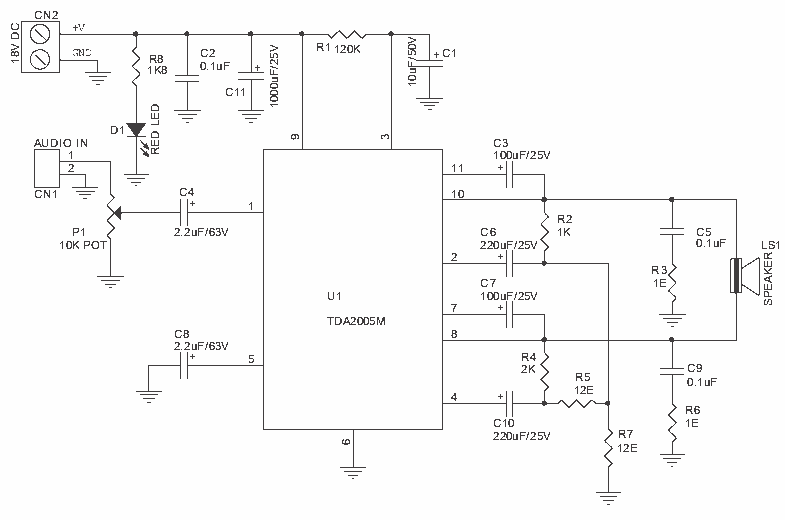
Latest British Police Car Siren circuit
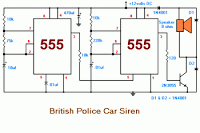
The 555 timer on the right is configured as an alarm sound generator, while the second 555 timer on the left operates as a 1 Hz astable multivibrator. The output from the left timer modulates the frequency of the right timer, resulting in the frequency of the right timer alternating between 440 Hz and 550 Hz at a cyclic rate of 1 Hz. The transistor 2N3055 is utilized to amplify the sound signal to the loudspeaker. This circuit is suitable for novice hobbyists.
The circuit consists of two 555 timer integrated circuits (ICs), each serving a distinct purpose. The left 555 timer is set up in an astable configuration, generating a continuous square wave output at a frequency of 1 Hz. This output serves as a control signal that modulates the frequency of the right 555 timer, which is configured as a monostable or astable sound generator, depending on the specific design requirements.
The modulation of the right timer's frequency is achieved by connecting the output of the left timer to the control voltage pin (pin 5) of the right timer. When the left timer outputs a high signal, the frequency of the right timer increases to 550 Hz, and when it outputs a low signal, the frequency decreases to 440 Hz. This alternating frequency generation creates a distinctive alarm sound that can be used in various applications.
The 2N3055 transistor is employed as a power amplifier to drive a loudspeaker. It is connected to the output of the right 555 timer, allowing the amplified sound signal to be delivered to the speaker. The transistor's base is connected to the output of the 555 timer, while the collector is connected to the loudspeaker, and the emitter is grounded. This configuration ensures that the audio signal is sufficiently amplified to be audible when emitted from the loudspeaker.
Overall, this circuit is an excellent project for novice hobbyists, providing a practical introduction to timer circuits, frequency modulation, and audio amplification. It demonstrates fundamental concepts in electronics while allowing for experimentation and learning through hands-on experience.The 555 on the right is wired as an alarm sound generator and the second 555 timer on the left is a 1 Hz astable multivibrator. The output of the left timer is to modulate the frequency of the right timer. This process will cause the right timers frequency to alternate between 440Hz and 550Hz at a 1 Hz cyclic rate.
The transistor 2N3055 is used to amplify the sound signal to the loudspeaker. This circuit should be nice for newbie hobbysts. 🔗 External reference
The circuit consists of two 555 timer integrated circuits (ICs), each serving a distinct purpose. The left 555 timer is set up in an astable configuration, generating a continuous square wave output at a frequency of 1 Hz. This output serves as a control signal that modulates the frequency of the right 555 timer, which is configured as a monostable or astable sound generator, depending on the specific design requirements.
The modulation of the right timer's frequency is achieved by connecting the output of the left timer to the control voltage pin (pin 5) of the right timer. When the left timer outputs a high signal, the frequency of the right timer increases to 550 Hz, and when it outputs a low signal, the frequency decreases to 440 Hz. This alternating frequency generation creates a distinctive alarm sound that can be used in various applications.
The 2N3055 transistor is employed as a power amplifier to drive a loudspeaker. It is connected to the output of the right 555 timer, allowing the amplified sound signal to be delivered to the speaker. The transistor's base is connected to the output of the 555 timer, while the collector is connected to the loudspeaker, and the emitter is grounded. This configuration ensures that the audio signal is sufficiently amplified to be audible when emitted from the loudspeaker.
Overall, this circuit is an excellent project for novice hobbyists, providing a practical introduction to timer circuits, frequency modulation, and audio amplification. It demonstrates fundamental concepts in electronics while allowing for experimentation and learning through hands-on experience.The 555 on the right is wired as an alarm sound generator and the second 555 timer on the left is a 1 Hz astable multivibrator. The output of the left timer is to modulate the frequency of the right timer. This process will cause the right timers frequency to alternate between 440Hz and 550Hz at a 1 Hz cyclic rate.
The transistor 2N3055 is used to amplify the sound signal to the loudspeaker. This circuit should be nice for newbie hobbysts. 🔗 External reference

